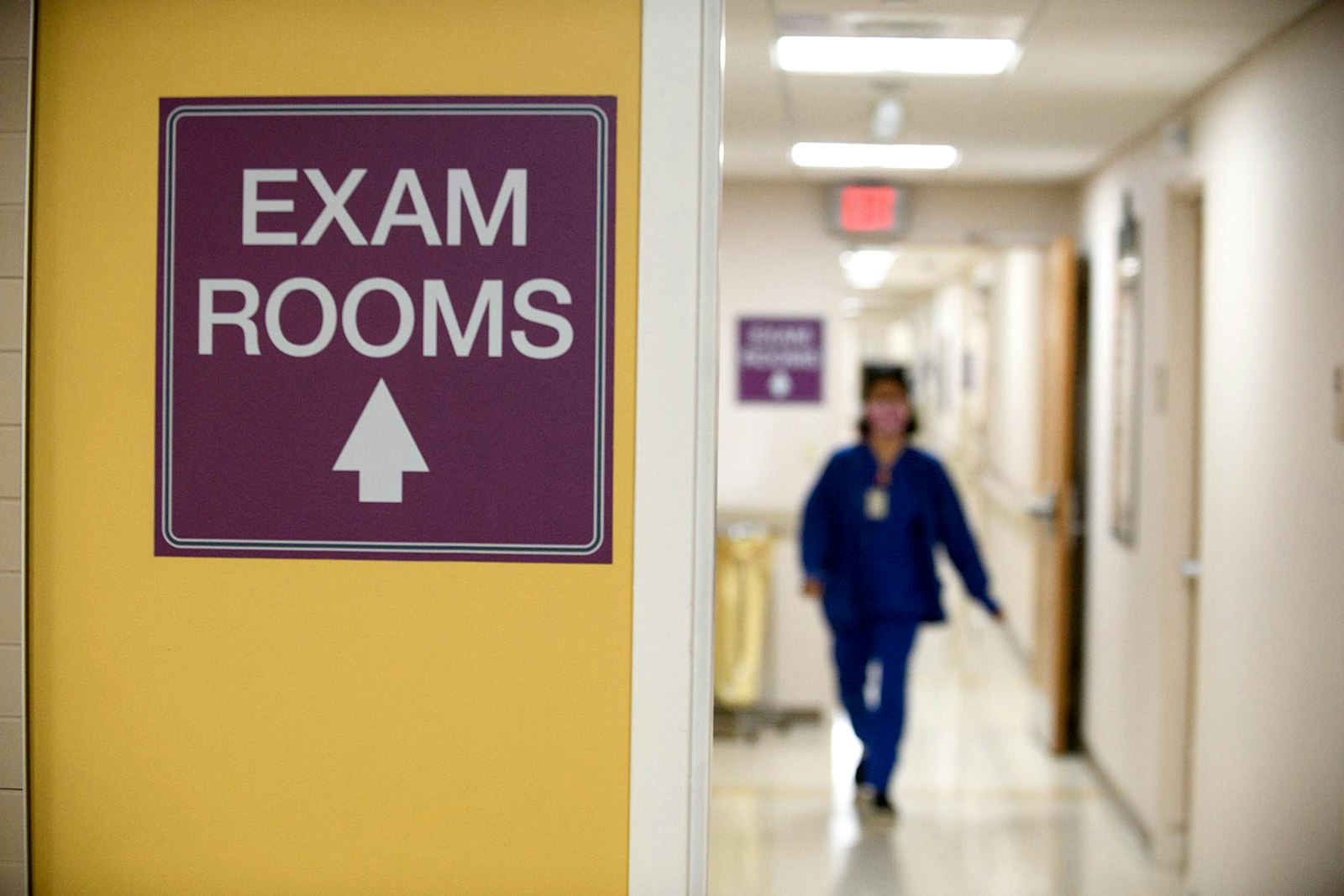Oncologists at the WVU Cancer Institute have access to a number of advanced imaging procedures. These essential diagnostic tools allow our physicians to precisely locate and identify the presence of potentially cancerous cells within patients.
Our expertise in imaging allows oncologists and radiologists to see if cancer has metastasized or spread from the primary tumor to surrounding tissue or organs. We also use advanced imaging to monitor tumor reduction in response to chemotherapy and other treatments. Imaging is also helpful as a positioning aid during biopsies and surgical tumor removal.
Diagnostic imaging plays a vital role in every patient’s cancer treatment journey — from detection and diagnosis to treatment, recovery, and remission.
Types of Advanced Imaging Techniques
Depending on the type of cancer, its location, or if it has spread to another part of the body, your oncologist may order one or more of the following diagnostic imaging procedures:
Ultrasound
Ultrasound uses high-frequency sound waves to produce images of internal organs. When the sound waves travel through the body, human tissue and organs reflect them. The ultrasound machine translates these “echoes” as a visible picture.
Also known as ultrasonography, sonogram, or sonography, ultrasounds are commonly used to take images of soft tissue tumors. The simple, minimally invasive procedure typically takes 20 to 30 minutes and does not use radiation.
Various ultrasound scans target different parts of the body. Some, like the abdominal ultrasound, are taken using an ultrasound wand pressed against the patient’s abdomen. Others, like the endoscopic bronchial ultrasound, utilize an ultrasound wand placed inside the throat.
Computed tomography (CT) scan
Computed tomography (CT) scans offer a precise means of viewing a tumor’s shape, size, and location. Using ultra-thin beams of radiation to create a series of pictures from different angles, a CT scan produces a computerized image of a “slice” of a certain area of the human body — much like looking at a slice from a loaf of bread.
CT scanners are large, donut-shaped machines. Patients lie on a flat table that slides into the scanner. CT scans are painless and performed as an outpatient procedure in 10 to 30 minutes.
In some cases, special contrast materials — either swallowed, given through an IV (intravenously), or administered by enema — may be used to obtain clearer images.
Magnetic resonance imaging (MRI) scan
Magnetic resonance imaging (MRI) scans do not use radiation. Instead, MRIs use strong magnets to create cross-sectional views of a particular section of the body.
Patients lie on a table that slides into the MRI scanner, which creates a powerful magnetic field. A burst of harmless radiofrequency waves is then pulsed through the patient. These waves react to the magnet and produce signals that convert to detailed, computerized images of the targeted organs or tissues.
MRI scans provide more precise images of soft tissues than ultrasound, and they are often used to find and pinpoint certain types of cancers, such as spinal cord tumors. MRI scans are sometimes used to distinguish between cancerous and non-cancerous tumors.
We can also use contrast materials with MRI to facilitate clearer images. These are different contrast materials than the ones we use with CT scans. MRI scans are painless, and the entire procedure takes between 45 minutes and two hours.
Nuclear medicine scan
Nuclear medicine scans help determine if cancer has spread or its stage, and establish whether current treatment protocols are working.
Nuclear medicine scans use radionuclides (sometimes called tracers), which release low levels of radiation into the body. The tracers are either injected, swallowed, or inhaled, depending on the type of scan. Body tissues affected by cancer absorb the radionuclides differently from normal tissue, allowing physicians to locate and identify potentially cancerous cells based on “hot” or “cold” spots in the scans.
Your oncologist may share specific guidelines regarding food and drink to avoid before a nuclear medicine scan to reduce potential interactions with administered tracers.
There are several types of nuclear medicine scans, including:
- Positron emission tomography (PET) scans — PET scans are performed in donut-shaped scanners, similar to a CT scan machine. In some cases, a dual PET/CT scanner machine is used, allowing the physician to obtain detailed information on cancer cell spread (from the PET scan), as well as precise body imaging (from the CT scan). PET scans take 20 to 30 minutes to perform, following a wait of an hour or more for the body to absorb the tracer.
- Bone scans — Bone scans screen for cancers that have metastasized or spread from other organs or tissues to the bones.
- Thyroid scans — Thyroid scans help diagnose certain thyroid cancers.
- Gallium scans — These scans use a form of gallium as the tracer. In addition to cancer, these tests help detect inflammation or infection in the body.
Imaging services provide critical, real-time pictures that help us identify and treat cancer. With imaging, our team can individually tailor treatments for every cancer patient, ensuring the best possible health outcomes.
